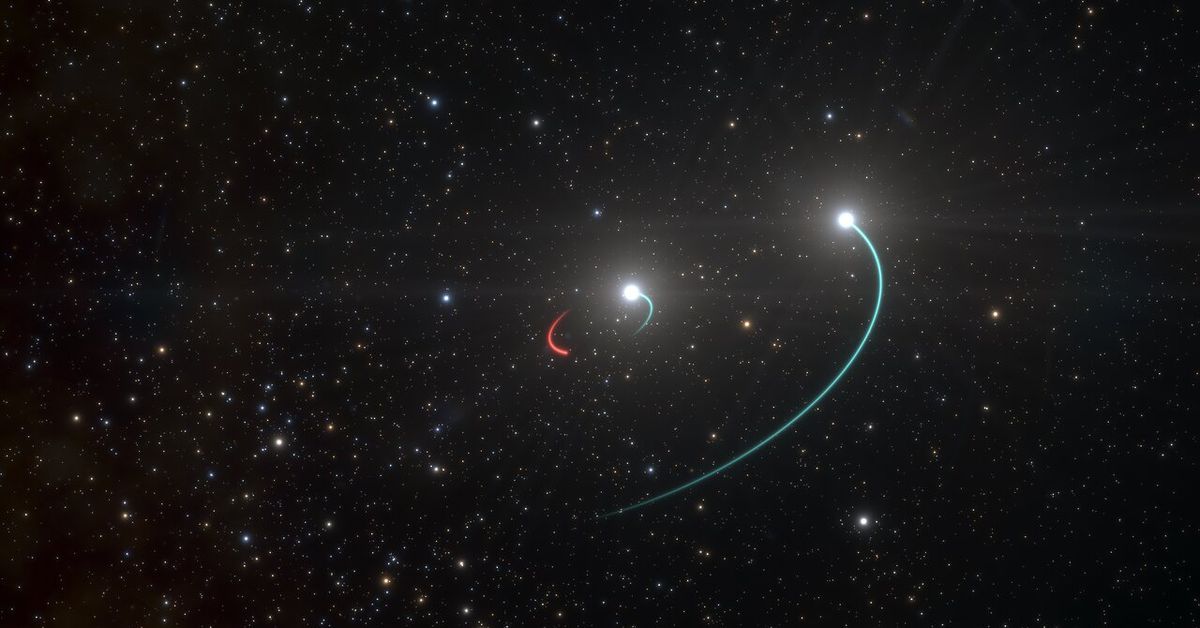
Astronomers have discovered what they think is a new black hole, and if they’re right, it’s not that far away from Earth. At a mere 1,000 light-years away, the small black hole would be our cosmic neighbor — the closest one to our planet ever found.
Being a black hole, the object is impossible to see directly with instruments from Earth, as no light escapes it. So scientists working at the European Southern Observatory (ESO) in Chile actually inferred that that object is where they think based on the movements of stars nearby, according to a new study published in Astronomy & Astrophysics.
The team was trying to get to the bottom of the weird behavior of these two stars that were close to one another in space in a system called HR 6819. They are both in the same system and similar in mass and size, but they act very differently. “One of them is rotating very rapidly, so much that it’s almost flying apart,” Thomas Rivinius, an ESO scientist who led the study, tells The Verge. The other one is barely rotating much at all. Meanwhile, they are both moving through space at different velocities. The rapid rotator is moving very slowly compared to the slow rotator, which moving through space at an extreme speed.
At a mere 1,000 light-years away, the small black hole would be our cosmic neighbor
For years, astronomers were curious about this two-star system, with some thinking that a third object must be nearby, causing these two stars to move like they do. Now, after years of speculation, Rivinius and his team decided to take another look with ESO’s La Silla Observatory in Chile. They tracked the movements of the stars and measured how they wobbled through space. They realized that the stars seemed to be orbiting around something else, an object that was about four times as massive our Sun. But at first glance, it didn’t seem like there was anything in the center of this system. That meant they were either revolving around a star that was super hard to see or a black hole.
To narrow down the choices, Rivinius and his team came up with the faintest possible star that could exist with that mass but ultimately couldn’t find any trace of such a dark object. “We could exclude any type of star with that mass being present,” says Rivinius. “So if there’s something with that mass in the system, it must be a black hole.”
The system is close enough to Earth that the stars near the black hole can be seen with the naked eye. But don’t worry: while 1,000 light-years is cosmically close, it’s still a huge distance, and this black hole poses no danger to Earth.
The black hole in this system is petite compared to some of the others that exist out in the Universe. For instance, the supermassive black hole at the center of our Milky Way Galaxy is thought to be 4.6 million times the mass of our Sun. (It’s also 26,000 light-years away.)
Finding a black hole so close to Earth means that there might be even more tiny black holes peppered throughout the Universe — and even our own galaxy. “We only know of a few dozen black holes, but we suspect there might be a billion in the galaxy,” says Rivinius. “The fact that it’s so close actually means that it cannot be very uncommon.”
